57th Osho Match Game 5
[Black "Kubo Toshiaki, Challenger"]
[White "Habu Yoshiharu, Osho"]
[Event "57th Osho-sen, Game 5"]
[Date "February 27th and 28th 2008"]
1.P7g-7f 00:00:00 00:00:00
2.P3c-3d 00:00:00 00:01:00
3.P6g-6f 00:02:00 00:01:00
4.P8c-8d 00:02:00 00:07:00
5.S7i-6h 00:04:00 00:07:00
6.S7a-6b 00:04:00 00:10:00
7.S6h-6g 00:08:00 00:10:00
8.K5a-4b 00:08:00 00:13:00
9.R2h-6h 00:11:00 00:13:00
10.K4b-3b 00:11:00 00:20:00
11.P1g-1f 00:18:00 00:20:00
12.P1c-1d 00:18:00 00:48:00
13.S3i-3h 00:32:00 00:48:00
14.G6a-5b 00:32:00 00:54:00
15.G6i-5h 00:53:00 00:54:00
16.P5c-5d 00:53:00 01:00:00
17.P4g-4f 01:14:00 01:00:00
18.P8d-8e 01:14:00 01:29:00
19.B8h-7g 01:14:00 01:29:00
20.P7c-7d 01:14:00 01:30:00
21.K5i-4h 01:17:00 01:30:00
22.S3a-4b 01:17:00 01:31:00
23.K4h-3i 01:21:00 01:31:00
24.S4b-5c 01:21:00 01:36:00
25.K3i-2h 01:22:00 01:36:00
26.G4a-4b 01:22:00 02:04:00
27.P5g-5f 01:37:00 02:04:00
28.R8b-7b 01:37:00 02:05:00
29.R6h-7h 02:06:00 02:05:00
30.P6c-6d 02:06:00 02:17:00
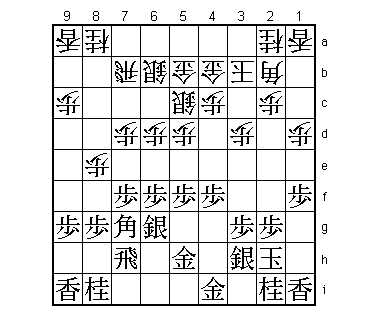
In the third game, Habu played the Anaguma, but here he selects a quick attacking
strategy. It has actually been quite a while since he played this type of strategy.
We must go back more than 5 years (to January 11th 2003 in a Junisen game against Fujii
to be exact) to find a game where he played S4b-5c. Since then, the plan R7b followed
by P6d was found to be a strong plan for the Ibisha side. A good example is the game
between Suzuki and Kimura (also a Junisen game), which was played on September 15th
2006. In this game it followed 30.G4g P7e Px7e Rx7e B8h Rx7h+ Sx7h P6e and white won
easily. The winning percentage of the Ibisha side with R7b followed by P6d is quite high
and several counter strategies for the Furibisha side have been developed. One of these
is 31.R8h, which has been played with good results by Sasaki (5-dan). Kubo plays it
differently here.
31.P3g-3f 02:12:00 02:17:00
This is an interesting move (but not a new one), because it allows a bishop promotion
on 4f to be a check, as we will see in this game. Of course, Kubo is aware of it, but
judges that black has enough counter chances.
32.P6d-6e 02:12:00 02:55:00
33.P6fx6e 02:33:00 02:55:00
34.B2bx7g+ 02:33:00 02:56:00
35.N8ix7g 02:33:00 02:56:00
36.R7b-8b 02:33:00 03:01:00
37.R7h-8h 02:51:00 03:01:00
38.B*7i 02:51:00 03:38:00
39.R8h-8i 03:00:00 03:38:00
40.B7ix4f+ 03:00:00 03:41:00
41.B*3g 03:04:00 03:41:00
42.+B4fx3g 03:04:00 03:57:00
43.N2ix3g 03:10:00 03:57:00
44.N8a-7c 03:10:00 03:59:00
45.P7f-7e 03:45:00 03:59:00
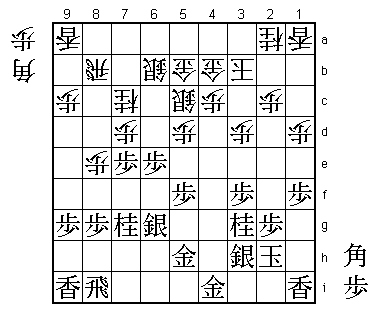
The sealed move and a very positive one. Kubo admitted after the game that he was not
sure whether to play 45.P7e here or 45.G4g. The latter move also looks good for the
Furibisha side after 46.P*6f S7h B*6h G5h B1c+ B*4h +B2b G5h-5g. Kubo prefers the more
aggressive 45.P7e, which more or less forces white to give up the rook.
46.R8b-8d 03:45:00 04:41:00
47.P8g-8f 03:59:00 04:41:00
48.P7dx7e 03:59:00 05:13:00
49.P8fx8e 04:21:00 05:13:00
50.R8d-7d 04:21:00 05:13:00
51.B*8c 04:43:00 05:13:00
52.P7e-7f 04:43:00 05:13:00
53.B8cx7d+ 04:43:00 05:13:00
54.P7fx7g+ 04:43:00 05:13:00
55.R8i-6i 05:33:00 05:13:00
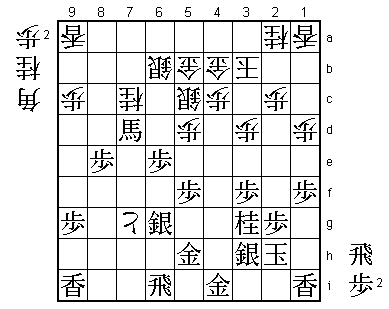
56.P*6h? 05:33:00 05:34:00
Habu regretted this move, because the pawn is not doing much. He said after the game
that he should have played 56.P1e S6f B*8g here.
57.R6i-7i 05:34:00 05:34:00
58.+P7gx6g 05:34:00 05:36:00
59.G5hx6g 05:34:00 05:36:00
60.N*2d 05:34:00 05:38:00
61.S3h-4g 05:50:00 05:38:00
62.S*7h 05:50:00 06:18:00
Habu is desperately trying to create something. Here the alternative is 62.P6i+ Rx6i
B*8g, but it is unclear which is better.
63.R7ix7h 05:57:00 06:18:00
64.B*6i 05:57:00 06:18:00
65.G6g-5g 06:27:00 06:18:00
66.B6ix7h+ 06:27:00 06:18:00
67.G4i-3h 06:33:00 06:18:00
68.R*5i? 06:33:00 07:06:00
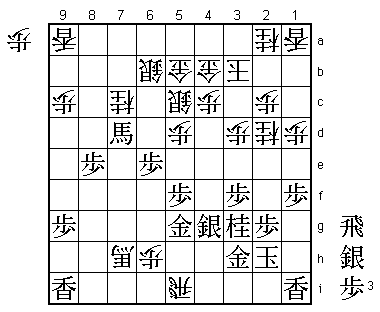
Another mistake. Better was 68.R*7i which strongly threatens +B8h which both attacks
the promoted bishop on 7d and makes the bishop on 8h work in defence.
69.G5g-4f 06:37:00 07:06:00
70.P1d-1e 06:37:00 07:07:00
71.N3g-2e 06:43:00 07:07:00
72.+B7h-7g 06:43:00 07:07:00
73.P3f-3e 06:53:00 07:07:00
Kubo smelled blood here. There is a lot of pressure on the white king coming up,
while the black king has plenty of running space up the board. However, this is Habu
he is playing against and after the game Kubo admitted that he thought it would be much
easier to win from here.
74.P1ex1f 06:53:00 07:14:00
75.P3ex3d 07:06:00 07:14:00
76.G5b-6c 07:06:00 07:21:00
77.+B7dx6c 07:13:00 07:21:00
78.S6bx6c 07:13:00 07:21:00
79.R*5a 07:16:00 07:21:00
This threatens both mate with G*3a and to capture the gold on 5c. There were a
number of people in the press room who considered the possibility that Habu would
resign here.
80.P*3a 07:16:00 07:37:00
81.R5ax5c+ 07:44:00 07:37:00
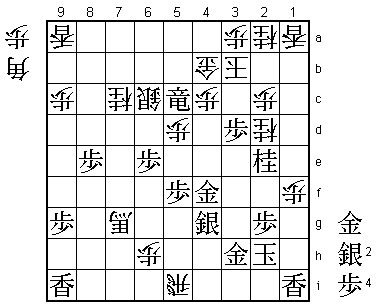
Kubo spent 28 minutes on this move, clearly showing that things are not as easy
as they look. 82.Gx5c is answered by 83.S*3c Nx3c Px3c+ +Bx3c Nx3c Kx3c B*5a and
mate, but for this mate to work it is important that the black lance is on 1i. Habu
can actually take this lance away and then take the rook on 5c.
82.P1f-1g+ 07:44:00 07:37:00
83.L1ix1g 07:47:00 07:37:00
84.L1ax1g+ 07:47:00 07:52:00
85.K2h-3g 07:47:00 07:52:00
86.B*1i? 07:47:00 07:54:00
Habu is making an unusual number of mistakes in this game. Here, 86.+Lx2g was better.
After 87.Kx2g R2i+, black is in serious trouble. For example, P*2h fails to B*1f K2f
Bx2e taking out the important knight on 2e, while G*2h is not good because of the
simple +R1i and it is hard to find a good continuation for black.
87.K3g-4h 07:50:00 07:54:00
88.G4bx5c 07:50:00 07:54:00
89.S*3c 07:51:00 07:54:00
90.N2ax3c 07:51:00 07:54:00
91.P3dx3c+ 07:51:00 07:54:00
92.+B7gx3c 07:51:00 07:54:00
93.N2ex3c+ 07:51:00 07:54:00
94.K3bx3c 07:51:00 07:54:00
95.N*4e 07:51:00 07:54:00
96.K3c-4b 07:51:00 07:54:00
97.B*3c 07:52:00 07:54:00
This bishop is both a check and works in defence. Because of this bishop, black
can now take the rook on 5i without being mated. This is winning, but...
98.K4b-5b 07:52:00 07:54:00
99.K4hx5i 07:53:00 07:54:00
100.P6h-6i+ 07:53:00 07:57:00
This starts a string of checks. They seem to be desperate checks, but this position
is still quite complicated. If black makes a mistake in defending against the checks,
white can either mate the black king or take out the bishop on 3c, thus defending
against the mate.
101.K5ix6i 07:53:00 07:57:00
102.L*6g 07:53:00 07:57:00
103.K6i-7h 07:53:00 07:57:00
104.L6g-6h+ 07:53:00 07:57:00
105.K7h-8g 07:57:00 07:57:00
106.P*8f 07:57:00 07:57:00
107.K8gx8f 07:57:00 07:57:00
108.N*7d 07:57:00 07:57:00
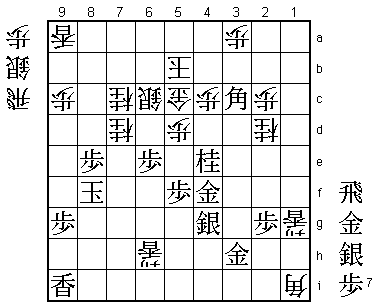
109.K8f-7e? 07:57:00 07:57:00
In the press room, several computers were used to analyze if there was a mate against
the black king. The answer in each case was "No Mate". However, after 109.K7e the
computer ominously announced "Mate Found". Strictly speaking, this is a case of "Tonshi"
or "Sudden death" where the side who has a winning position inadvertently allows a mate
where there is none. In this case, labelling 109.K7e a blunder would be a little too
harsh on Kubo, because the route to safety still has many obstacles. Correct was 109.K7f.
The point is that after 110.P*7e white uses up his only pawn, so that after 111.Kx7e G6d
K8d there is no pawn left to drop on 8c. Therefore, white has to play 110.R*8f and after
111.K7g Nx6e the two knights work very well: K6h P*6g K5h N6f Bx6f+ P6h+ K4h (Kx6h Rx6f)
but then the third knight comes into play with N3f!. Why this is an important move becomes
clear if white plays Rx6f immediately, because this is answered by R*8b and white is mated
(note that the rook must be dropped on 8b to make the check R8d+ possible later). After N3f,
if black takes with the gold then Gx3f Rx6f R*8b is answered by Bx8b+!. Therefore, the only
way to win for black here is to take the knight on 3f with the silver. Then after Sx3f both
Rx6f and Bx4f+ do not defend against mate, so black wins. Finally, if white plays S*5g
instead of N3f, the black king escapes after K3i. In the post mortem analysis after the
game, both players were surprised at these variations, indicating that neither was really
sure about how to judge the position here.
110.G5c-6d 07:57:00 07:57:00
111.P6ex6d 07:57:00 07:57:00
112.R*6e 07:57:00 07:57:00
Resigns 07:59:00 07:57:00
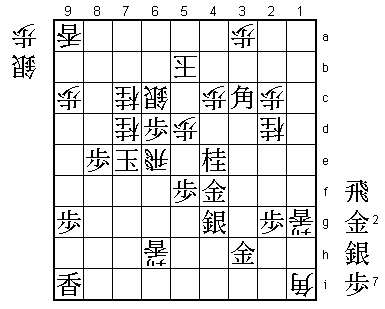
Mate after 113.K8d Rx8e Kx7c S*7b or 113.K7f R6g+ K7e +R6e K8d +Rx8e etc. Quite an abrupt
end to this game and to this match. Habu successfully defends his Osho title, although he will
not be too happy about this final game. Still, it was another milestone in an amazing career,
because this was Habu's 100th tournament victory: 68 title matches and 32 victories in other
tournament. In the history of the game, only the great Oyama has ever passed the 100 victory
mark.






